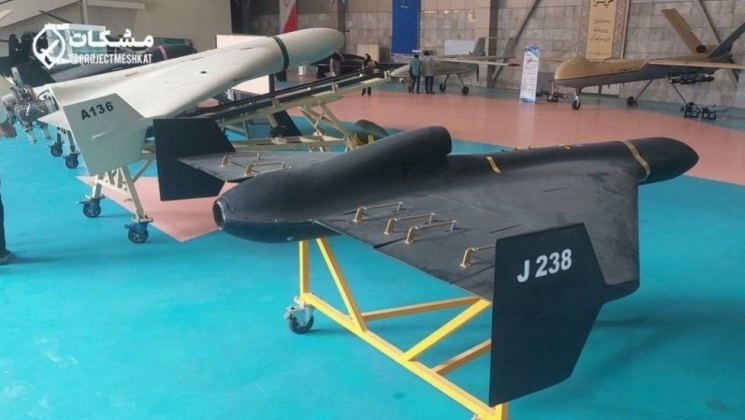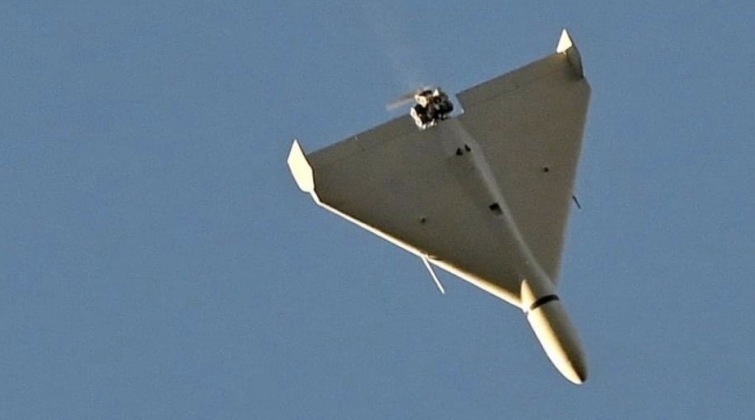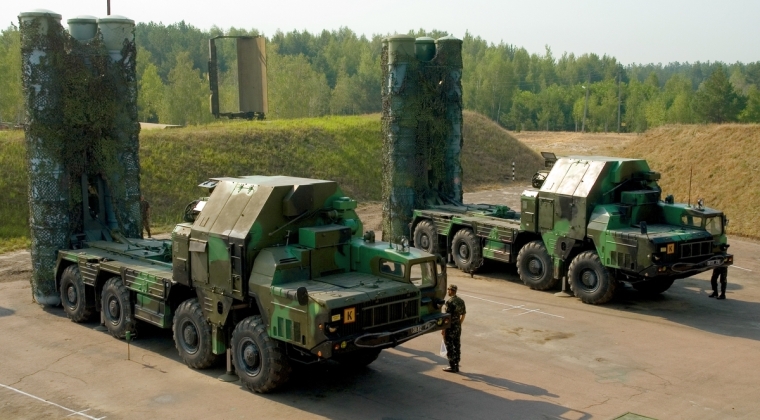News
Shahed-238 Drone Makes Ukraine Combat Debut: Iran’s Enhanced New ‘Kamikaze’ Jets Built to Combat Enemy Air Defences
The Russian Air Force has reportedly begun deploying a new class of Iranian drone in combat in Ukraine, with the first evidence of the new aircraft class operating in the theatre emerging on January 8. Pictures released on social media that day appeared to show the remains of a Shahed-238 which had been launched at a target in Ukraine, with a small jet turbine distinguishing the aircraft from its predecessor the propeller powered Shahed-136. Unveiled on November 19 at an Iranian Revolutionary Guard Corps aerospace achievement exhibition, the new drone introduced a wider range of guidance options while its engine type allowed it to reach targets much faster – reducing response times and making it more difficult to intercept. Three variants of the drone were displayed with different guidance options optimised to various target types, including one with an anti-radiation seeker allowing the aircraft to be used for air defence suppression missions. Its unveiling came less than a month before the Iranian-aligned Hezbollah militia group launching limited strikes against Israeli Iron Dome air defence systems, highlighting the value such aircraft could have not only for its extra-regional clients such as Russia but also for its strategic partners within the Middle East.

The Shahed-136 made its combat debut in the Ukrainian theatre in September 2022, and following large scale deliveries by Iranian military affiliated aircraft they for a time represented Russia’s primary means of launching precision attacks across the frontlines. The single use aircraft were designed to use their explosive laden bodies as weapons, leading them to be widely referred to as ‘kamikaze’ or ‘suicide’ drones as they are conceptually a hybrid between an unmanned aircraft and a cruise missile. As Ukrainian air defences have become increasingly critically depleted, Russian missile and air strikes against Ukraine on December 29 and December 31 showed a significant reduction in the percentage of drones which Ukrainian forces were able to intercept. Shahed-136 drones in 2023 began licensed assembly in Russia, although imports from Iran have reportedly also continued in parallel in order to further maximise Russian forces’ capacity to carry out wartime attacks. The aircraft are designated Geran-2 in the Russian Armed Forces. The newer Shahed-238, however, appears to have only been used on a very limited scale, with air defence suppression missions expected to be a primary utility of the asset.

An outstanding question regarding the Shahed-238 is the extent to which its use of jet engines, and thus much greater infrared signature, could in fact compensate for the benefits of added speed by increasing its vulnerability to enemy air defences – whether Ukrainian or Israeli. It has been speculated that the drones are powered by TJ100 turbojet engines, a powerplant type which powered production fighters from the 1940s to the 1970s and which although less efficient than turbofan engines are considerably cheaper and less complex and thus more suitable for a low cost single use drone design. The Shakes-238 is nevertheless expected to cost close to twice as much or more as the Shahed-136 due primarily to the immense cost discrepancy between propeller and jet engines. The aircraft may thus have been developed specifically for export to Russia, which has greater requirements and a larger budget for such assets, and are expected to be reserved for higher priority targets or targets better covered by Ukraine’s air defences.

The very serious depletion of the Ukrainian surface to air missile arsenal widely reportedly by both local and Western sources had by late 2022 already begun to seriously curb its ability to launch two missiles to intercept each target, as is the norm to ensure a high probability of kill. The Shahed-238’s expected much greater survivability thus as the potential either to accelerate the depletion of Ukraine’s air defences by forcing more missiles to be expended per target, or to force Ukrainian units to concede to letting the attacks through to save missiles. The drones’ ability to specifically target remaining Ukrainian air defence positions, however, makes them a particularly serious threat. It remains highly possible that Shahed-238 drones are being used on a trial basis pending larger scale acquisitions or possibly, although less likely, a further license production deal. At a time when Ukrainian forces face increasingly overwhelmingly firepower disadvantages, with units from artillery units to elite mechanised brigades suffering crippling munitions shortages while Russian missile and air strikes escalate, introduction of a new much faster single use drone class has the potential to make an important contribution to this mounting pressure.












